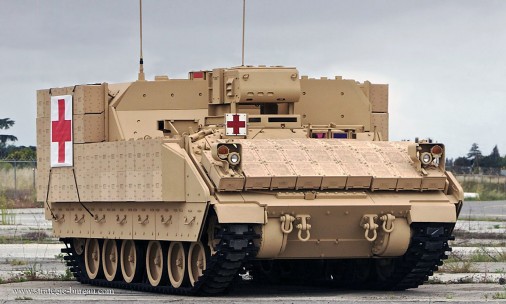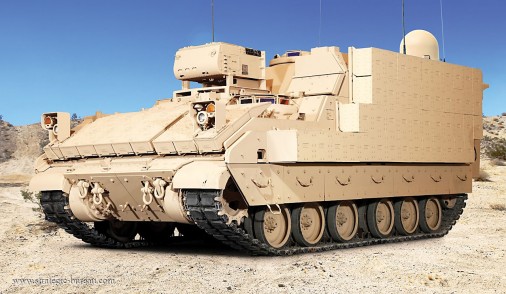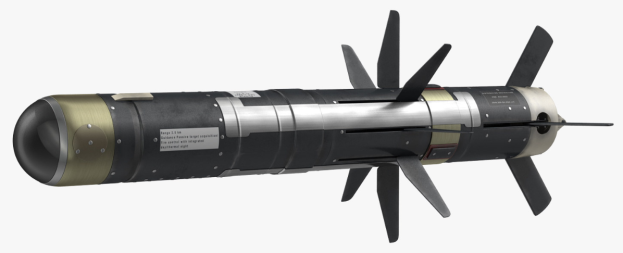BAE Systems is developing a new armoured multi-purpose vehicle (AMPV) to replace the existing M113 family of vehicles that have been in service with the US Army since 1960.
BAE Systems secured a contract from the US Army for the engineering, manufacturing and development (EMD) and low-rate initial production (LRIP) of the vehicles in December 2014.
Under the LRIP contract, BAE is responsible for the development of 29 AMPVs under the EMD phase and production of 289 vehicles in multiple configurations.
The first prototype in general configuration was presented to the armed forces in December 2016.
The vehicle combines mobility features with advanced technologies to enhance survivability of the occupants in the battlefield. The AMPVs are expected to be deployed by the Armoured Brigade Combat Team (ABCT).
BAE AMPV design and development details
BAE successfully concluded the critical design review (CDR) of the new AMPV in June 2016. The US Army took final delivery of the AMPVs built under the EMD phase in April 2018.
The vehicles will undergo strenuous testing in the next phase of development. The availability, maintainability, logistics and mission reliability of the vehicle will be tested during the phase. The vehicle will then enter the Milestone C review phase, followed by the LRIP phase in 2019.
British defense company BAE Systems on Tuesday said it had won additional funding up to $575 million from the US Army to begin production of its new armored vehicles that would replace the Vietnam War-era M113 fleet of personnel carriers.
The new vehicles, called the Armored Multi-Purpose Vehicle (AMPV), are “more survivable” with all-terrain mobility capabilities, BAE said.
Total funding for the initial production of the new vehicles, including previously awarded funds to support production planning, stands at $873 million, the defense contractor said. Source businessinsider.com

Armored Multi-Purpose Vehicle. LRIP: Low Rate Initial Production. BCT: Brigade Combat Team. SOURCE: Army – Via breakingdefense.com
BAE AMPV is based on the design of Bradley infantry fighting vehicle (IFV). It retains the layout of Bradley IFV, but incorporates a one-man open-top turret. The driver’s compartment and engine are located at the forward hull, while the troop’s section is positioned at the rear.
The rear hull of the vehicle features a hydraulic ramp, which allows rapid entry and exit of troops. The general-purpose configuration measures 3.7m-wide and 3.1m-high, and offers a ground clearance of 0.4m. The gross weight of the vehicle is approximately 36,000kg.
BAE AMPV variants
Five variants are being produced as follows:
- General Purpose. This is an armored personnel carrier designed to move troops and materiel.
- Mortar Carrier. This vehicle provides fire support to mechanized units. A 120mm mortar will be carried.
- Armored Ambulance. This variant provides armored emergency transport of casualties to rearward medical facilities.
- Mobile Medical Clinic. Allows the forward positioning of medical services closer to the combat area.
- Mobile Command Vehicle. Providing commanders superior battlefield situational awareness and command and control capability when and where it is needed most.
Source globalresearch.ca
The BAE AMPV can be customised into multiple configurations based on the mission requirements. It is being developed in five variants, namely general-purpose vehicle, medical evacuation vehicle, mission command vehicle, mortar carrier vehicle, and medical treatment vehicle.
A sixth variant of the vehicle will also be developed to replace the engineer variant of M113 vehicles at Echelons Above Brigade (EAB). The engineer vehicle variant will provide advanced combat capability to the combat engineers at EAB.
The general-purpose vehicle can be used for the transportation of troops, supplying equipment and goods to the forces and carrying casualties from the battlefield. The variant can carry a maximum of six personnel, including a driver, a commander and four infantry troops.
The medical evacuation variant of the AMPV was exhibited at the AUSA 2016. It can carry three crew, six ambulatory patients or four litter patients or three ambulatory and two litter patients during casualty evacuation (CASEVAC) operations.
Engineer version
Armament and self-protection features of BAE AMPV
The one-man open turret of the AMPV can be installed with a roof-mounted protected weapon station housing 7.62mm or 12.7mm machine guns, or a 40mm automatic grenade launcher.
12.7mm machine guns one-man open turret
M230LF 30mm cannon and Javelin
M230LF 30mm cannon
The 30 mm M230LF is a more capable version of the 30 mm cannon featured on the Apache helicopter and is a member of the Chain Gun® family of externally powered, combat-reliable conventional automatic weapons. The gun is effective, lightweight and easy to maintain and has multi-role, multi-target system capability.
The M230LF boasts a DC drive motor with a firing rate of 200 Rounds Per Minute. Other features include an anti-hangfire system, an extended-length barrel for enhanced muzzle velocity and a de-linking feeder that allows the use of linked ammunition. The M230LF is ideal for use on ground vehicles and patrol boats.
The gun has a reliability of 22,000 mean rounds between failure. It fires M789 HEDP, M788 TP and NATO standard 30 mm ADEN/DEFA ammunition.
The M230LF is a link-fed version of ATK’s 30mm Chain Gun used on the Apache helicopter. The weapon fires M788, M789 and NATO standard 30mm ADEN/DEFA ammunition. The M230LF is ideal for use on ground vehicles and patrol boats in turrets or remote weapon stations.
Physical Data:
- Length: 85.87 in. (2181mm)
- Width: 10.915 in. (277.2mm)
- Height: 11.37 in. (288.8mm)
- Receiver Weight: 76 lb (34.5 kg)
- Feeder Weight: 39 lb (17.7 kg)
- Barrel Weight: 45 lb (20.4 kg)
- Total Weight: 160 lb (72.6 kg)
- Recoil Ground Vehicle: 6,300 lb (38,022 N)
- Recoil Naval: 1,650 lb (7,339 N)
- Power Required: 1.0 horsepower
- Clearing Method: Cook off safe, open bolt
- Safety: Absolute hangfire protection
- Case Ejection: Side
Performance Data:
- Rate of Fire: Cyclic, 200 Rounds Per Minute
- Feed System: Dual feed, integral to weapon
- Reliability: 22,000 mean rounds between failure
Source defence.nioa.com.au
Javelin
The FGM-148 Javelin is a US-made man-portable fire-and-forget anti-tank missile. It was fielded to replace the M47 Dragon.
In the mid 1970s the US Army adopted the M47 Dragon anti-tank guided missile. It was a shoulder-fired weapon with a wire guidance. This anti-tank missile had a reliable design and very good performance. However by the late 1980s the M47 became out-dated. Its effective range was limited to 1 000 m. Also penetration power of the M47 was insufficient to defeat latest main battle tanks with heavy armor. So the US Army awarded a contract to develop a new anti-tank guided missile to replace the M47 Dragon.
Currently the FGM-148 Javelin is one of the most advanced man-portable anti-tank guide missile system in the world. It can destroyed any current main battle tank. It can also target low flying helicopters. Only some existing anti-tank missiles, such as Israeli Spike can compare with the Javelin. However a close copy of the Javelin, called the HJ-12, recently emerged in China. This Chinese missile has similar specifications and capabilities as the Javelin.
The missile locks on the target before launch. During flight it guides automatically. During that time the operator can detach an empty tube and from the CLU and attach another tube with missile. It takes about 15 seconds. Alternatively the crew can leave a firing position.
There are two modes of attack: top attack and direct attack. The top-attack flight mode is used to engage tanks and other armored vehicles. After the launch the missile climbs upward and then dives towards the target. This method is very suitable to destroy main battle tanks, because most of them have only a minimum level of armor protection in the upper part of the turret. In direct attack mode the missile flies directly to the target. This mode is used to engage buildings, bunkers, weapon crews and concentrations of enemy troops. In the direct attack mode the Javelin can also engage low-flying helicopters.
The missile is equipped with imaging infrared seeker. The missile has an 8.4 kg tandem shaped charge warhead. A precursor warhead detonates any explosive reactive armor and the primary warhead penetrates the base armor. The Javelin is capable of destroying any existing main battle tank in the world. Source military-today.com
The all-welded aluminium hull integrates enhanced underbody protection for increased survivability. Explosive reactive armour sheets fitted in front and either side of the hull offer protection against grenade launchers and guided ammunition.
Applique armour and spall liners on the crew compartment further enhance the protection level offered by the vehicle.
The crew and engine compartments feature an advanced automatic fire suppression system.
Engine and mobility
The BAE AMPV is powered by a Cummins diesel engine, which offers a maximum power output of 600hp. The fuel tanks are stationed at the rear of the vehicle.
The new armored vehicle has the same engine and transmission as the Bradley M2A3. It is powered by Cummins VTA-903T diesel engine, developing 600 hp. Vehicle has good cross-country mobility and can keep up with main battle tanks. Source military-today.com
Cummins VTA-903T diesel engine
The 90° V8-cylinder engine with a displacement of 14.8 litres and with outputs of 265 to 660 hp (198 to 492 kW). Since the engine was introduced evolutionary changes have included a larger camshaft, air-to-air after cooling and increased cylinder pressures allowing horsepowers to rise to the current 447 kW (600 bhp) and 491 kW (660 bhp) and the soon to be introduced twin-turbo 558 kW (750 bhp) rating.
Source army-guide.com
The vehicle is expected to attain a maximum speed of 61km/h and maximum range of 362km. The on-board suspension system ensures smooth mobility of the vehicle while traversing through rough terrains.
Main material source army-technology.com
Images are from public domain unless otherwise stated






















